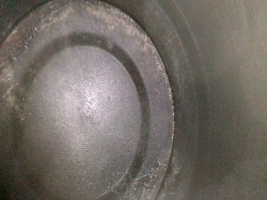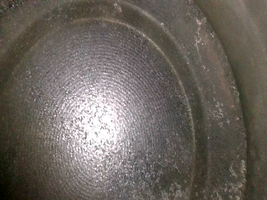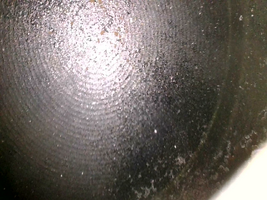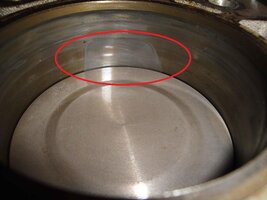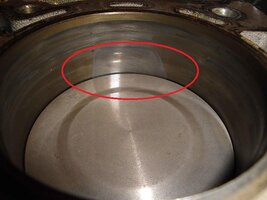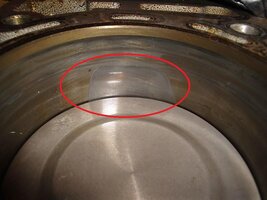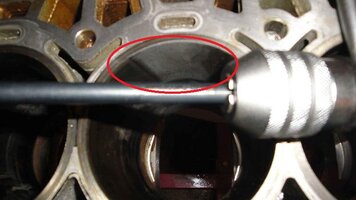If you are getting a Flashing CE Light...this will need a Deeper Diagnostic Dive ASAP. Try checking into the various Threads that concern "How to Perform an ACDelco TEC (Top Engine Cleaner) Treatment" to De-Carbonize the Trapped Top Compression Rings and Combustion Chambers. If you remove your Resonator to Throttle Body and find Dirty Motor Oil pouring out from inside... it is a SURE Sign of High Engine Blow-By Crankcase Pressures.
These Blow-By events pressurize and push random Dirty Motor Oil in and around the Spinning Valve Train Components while migrating under Blow By Pressure out through the Short Elbow to PCV Pipe in the upper front of the Valve Cover then entering the underside of the Resonator.
From there it accumulates and then moves through the Resonator and thence down through the Throttle Body and Intake Manifold Runners, only to mix with Ingested Air and Fresh EFI Fuel Sprays right at the Lower Intake Manifold Engine Head Intake Ports, confirming all of that event as being the source of the eventual congestion of Carbon Black "Mung" Contamination of the Combustion Chambers...
and MORE.
The resulting Excessive Carbon "Mung" Build-Up can invade the areas adjacent to the 24 Valve Seats and thus...increase the Compression Ratio above 10:1 by accident and invite *Pings* and Stutters from Pre-Ignition events due to "Increased Quench" that likely matches up with your P0302 issue on Cylinder #2.
If you Pull the Engine Dip-Stick and Smell a Heavy Concentration of Un-Burned Gasoline... this too is a confirming artifact of the Trapped Compression Rings issue due to their Very Thin Design and Very Low Tension. Their design invites a Gooey, Gluey, Gas-Gum to invade in and around the Rings via Un-Burned Fuel forming a Glue- Like Lacquer
...while Squeezing and Freezing them all ...Deep within the Lands & Grooves of the Pistons.
The loosenes
s of the GM OEM Graphite Coated Short Skirted Pistons without having those Comression Rings properly expanding and compressing inside of those Grooves to ameliorate all of the *Rattling Clatter* ... will make for a Very Noisy Engine from the excessive Piston-Rocking & Slapping
.
The resultant escape of the Dreadful Fuel-Air (and Oil) Mixture passing around those Trapped Rings... pressurizes the cavity below and inside of the Lower Crankcase. The Un-Burned Fuel will Mix with and Reduce the Motor Oil Lubricity and its Protective Qualities and...
And with Nowhere Else To GO... those Un-Burned and Partially Combusted Gas Vapors soon head upwards, out through the Cathedral Shaped Rhomboid Casting passages in the sides of the "Lost Foam" Engine Block... rising upwards into the regions just under the Valve Cover.
It sadly follows on that the Catalytic Converter will also suffer due to Excessive Oil and Fuel Contamination that can eventually "Poison The CAT" in this like manner. The Trapped Compression Rings can become the Death Knell of the CAT. If you take Thermal Readings of the Front and Rear Sections of the CAT and the Front areas Temp is Much Higher than right at the Rear of the CAT... this is symptomatic of having a
"Poisoned CAT".
NOTE:
Some of these problems can be avoided or even delayed somewhat by returning to Making Oil and Filter Changes Every 3,000 Miles in consideration of just how MUCH Un-Burned Fuel and Pure Black Carbon can REALLY contaminate the Motor Oil of Aging GMT360 Engines... if PUSHED or Forced to endure these decaying conditions for 5,000 to 8,000 Miles or more. Doing otherwise on High Mileage Motors is to invite these issues visiting these Elder Engines... MUCH sooner than later.
In a Nutshell:
 . I am worried that maybe the oil pressure isn't good enough for proper lubrication especially that we dont have a pressure sensor in our 4.2. The pressure switch is new though its not OEM.
. I am worried that maybe the oil pressure isn't good enough for proper lubrication especially that we dont have a pressure sensor in our 4.2. The pressure switch is new though its not OEM. . I am worried that maybe the oil pressure isn't good enough for proper lubrication especially that we dont have a pressure sensor in our 4.2. The pressure switch is new though its not OEM.
. I am worried that maybe the oil pressure isn't good enough for proper lubrication especially that we dont have a pressure sensor in our 4.2. The pressure switch is new though its not OEM.

